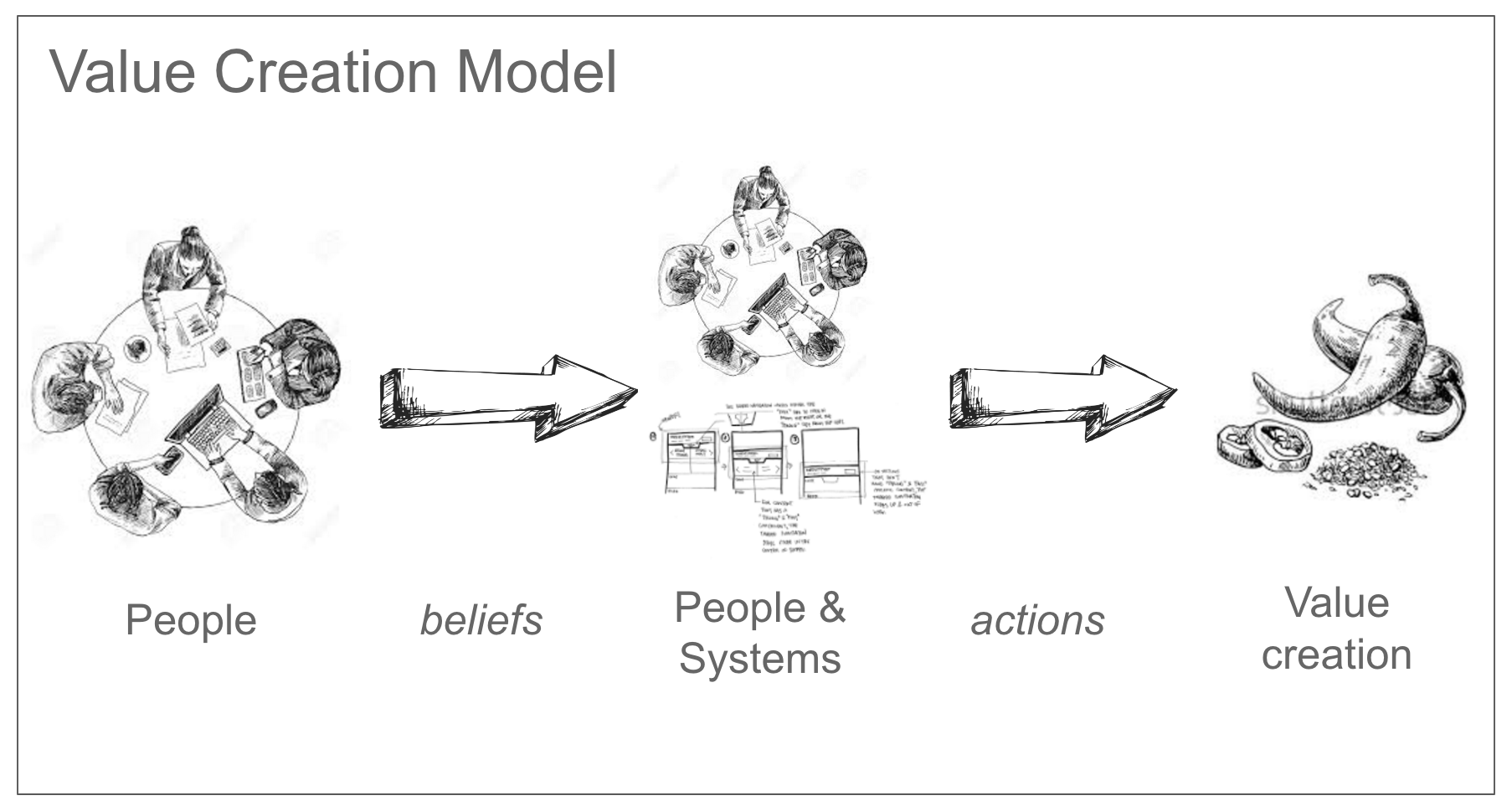To do good, have a good time and enjoy the day today gives meaning to life. The same applies to the meaning of business, with the addition of creating value, as perceived by others.
In this, and a series of blog posts, I will share how this fundamental belief has formed and continue to direct the organizational design and management at Northern.tech.
No one-size-fits-all
How does an organization create value? From ancient times to the 1800s scientific management theories to today’s hipster meritocracy and holacracy models, history tells us no blueprint exists on how to best design businesses. It is like being a great mom and dad; there is no one-way of doing it. Everyone needs to find what works best for them within their natural borders and constraints under which they operate.
The Value Creation Model
At Northern.tech we have adopted a simple Value Creation Model. The model works like this: All value creation starts with people. The same people’s beliefs about other people, like colleagues, customers, etc. and beliefs about relevant systems, like budgeting processes, product development, etc. influence the actions that lead to value creation.

Explanation of the model
Directly and indirectly, value creation starts with people. People, thanks to cognitive capabilities, produce ideas that eventually can be transformed into actions that leads to new and/or improved products and services.
Actions are a function of people’s beliefs about other people and relevant systems. Therefore, at Northern.tech, from a management perspective, the main focus should be on the beliefs, people and systems, not actions which often is the case in today’s corporate world.
In an organizational setting people have beliefs about other people like colleagues, partners, customers, vendors, and other relevant stakeholders. The actions of people who find their peers to be morons will be inferior to those who behold a positive impression and attitude. For instance people who find their manager incompetent or egoistic, will probably not perform well, and most likely the manager will reciprocate the skepticism and give impetus to a negative circle. Conversely, positive attitudes and a common set of beliefs of relevant people, will lead to increased performance, and a circle of positive self-reinforcement.
In addition to beliefs about people, people’s beliefs about business systems greatly impact the actions. A business system can be the review/performance system, software release system, recruitment system, QA system, sales process, marketing programs, operating model, etc. As with people, a positive belief toward a specific system, will positively influence the actions related to this system. The opposite applies in case of mistrusted systems.
Optimizing for value creation
In hierarchical, and especially mature and large organizations the main focus of management seems to be on actions, not the beliefs, or affected people and systems. Management layers use micro management to ensure that people do what they are suppose to do, and that reports structures exist to prove this fact upwards the organization.
I believe the best way to optimize for value creation is to focus on beliefs and people and systems, not actions. Once a value creation process has come to the action-stage, it is already too late to influence it in a meaningful way. Trying to do so only leads to frustration, delays and general decay.
I think of actions as read-only. To influence actions, attention must be directed towards people, their beliefs and systems. Organizational design and management procedures should culminate in flows of actions that create maximum value while the involved people have a good time.
Going forward
In the next blogs I will share how this thinking has lead to; a culture where employees can choose their own title, an organizational design based on decentralized autonomy, peer-based performance reviews, utmost transparency, continuous financial planning and more.
If you are reading this blog, because you are preparing for a potential role in Northern.tech (I hope so), know this is WYSIWYG. If the way we operate feels natural to you, I am sure you will thrive. If you are just curious to learn more about our Value Creation Model, I hope this will inspire to positive changes in organizations any size, anywhere.
